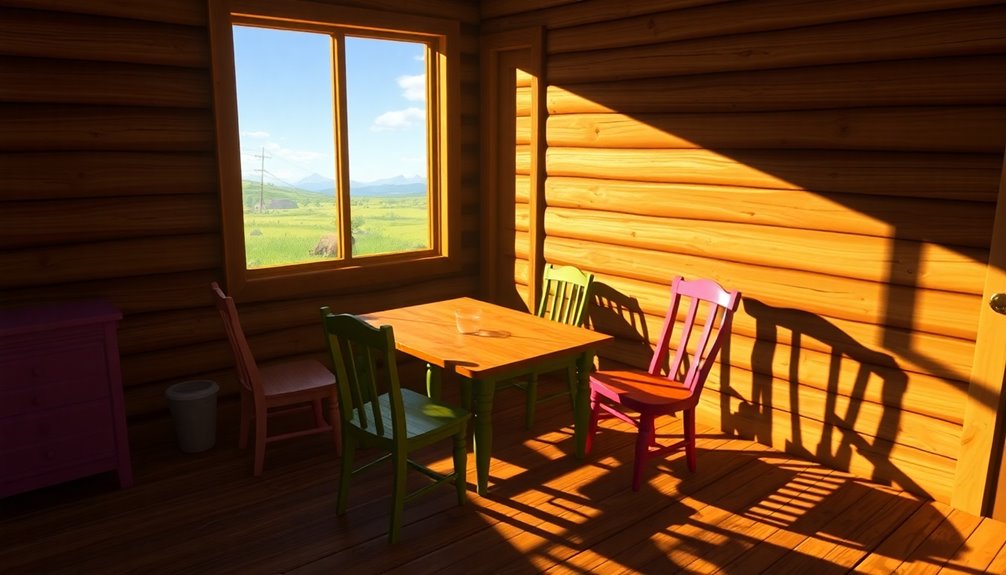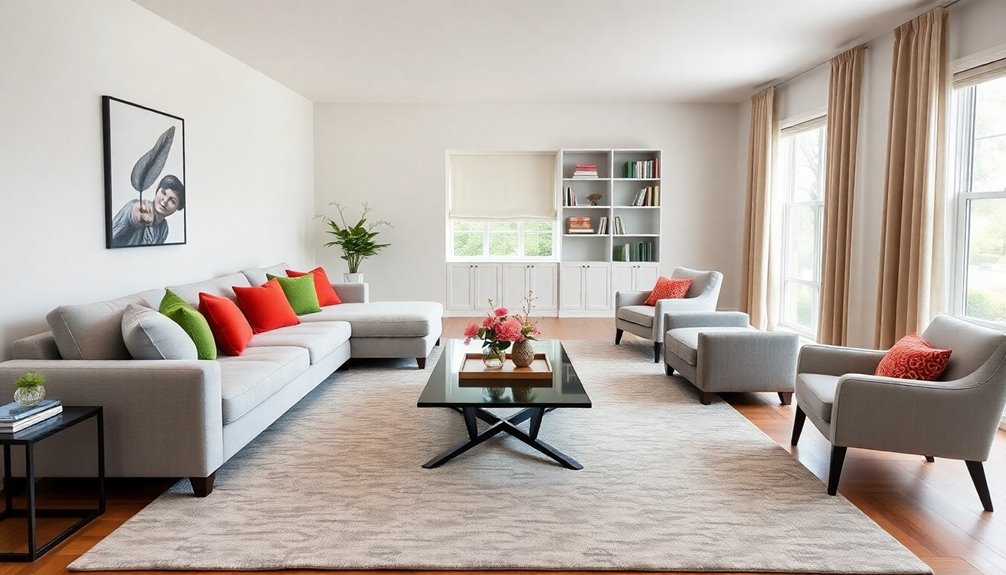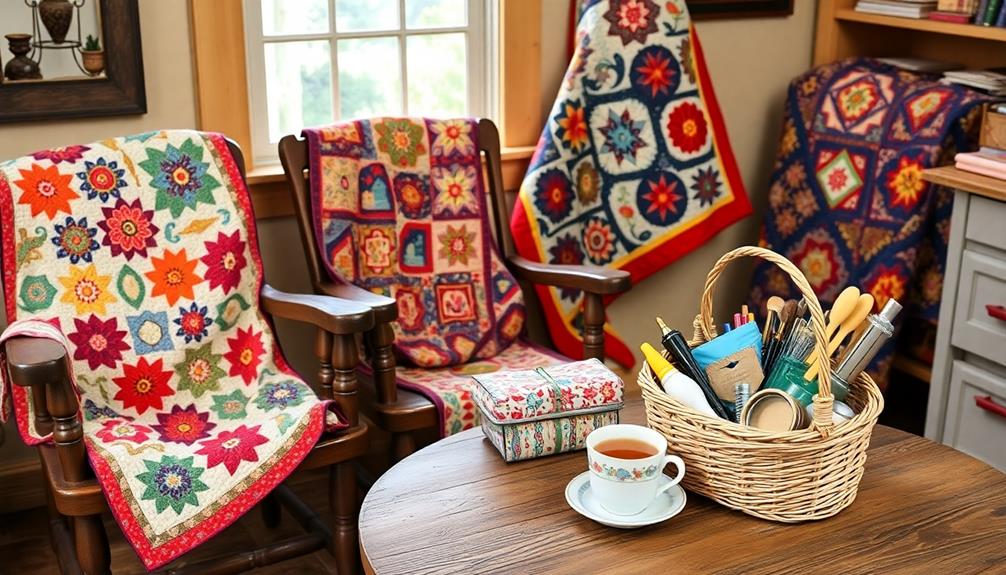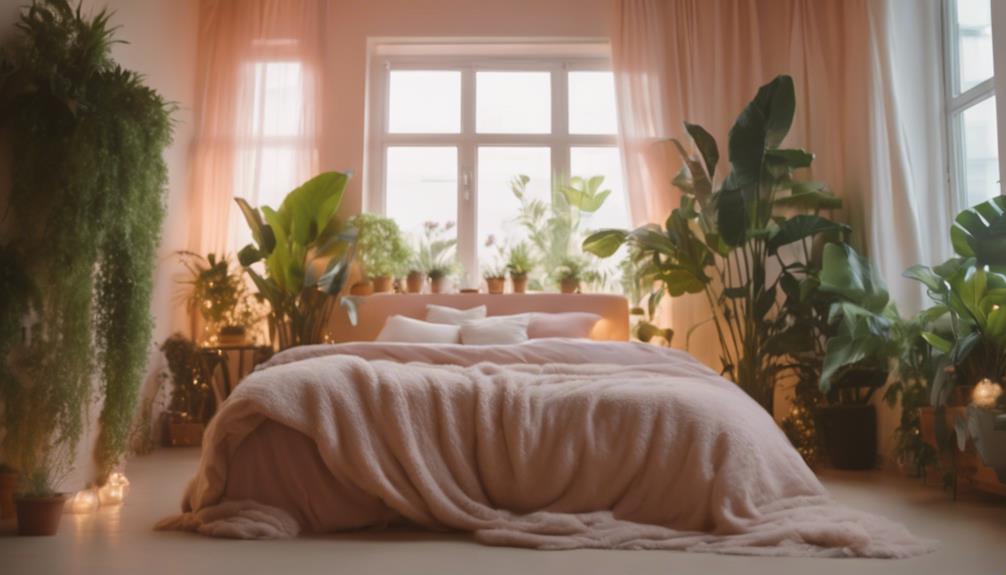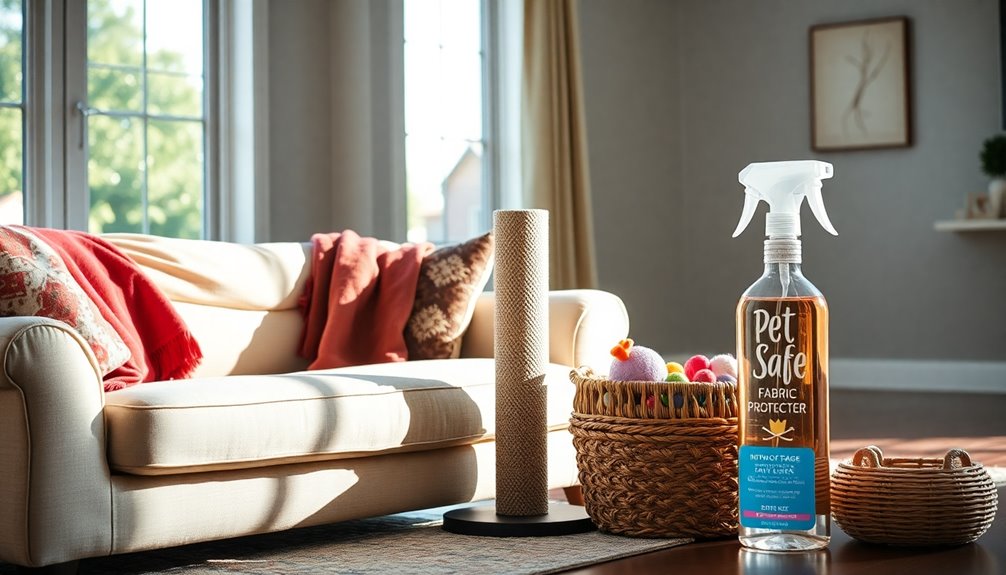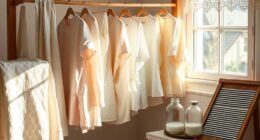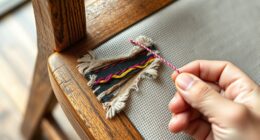To rotate furniture in Stardew Valley on your Nintendo Switch, simply select the item you want to move and press the A button. This works for chairs, tables, couches, and decorative pieces like rugs. Once you've highlighted the item, use the right joystick to position it. Ensure it's on a flat surface and look for green boxes indicating valid placements. You can rotate your furniture by pressing A again, allowing for adjustments in 90 or 180-degree increments. Each rotation gives you a chance to enhance your home's layout. Stick around to discover more tips for arranging your perfect farmhouse!
Key Takeaways
- Press the A button to select and rotate furniture on the Nintendo Switch.
- Furniture can typically be rotated in 90-degree or 180-degree increments.
- Only rotatable items include chairs, couches, tables, and decorative pieces like rugs.
- Fixed items such as paintings and TVs cannot be rotated.
- Ensure furniture is placed on a flat surface for optimal rotation and alignment.
Selecting Furniture in Stardew Valley
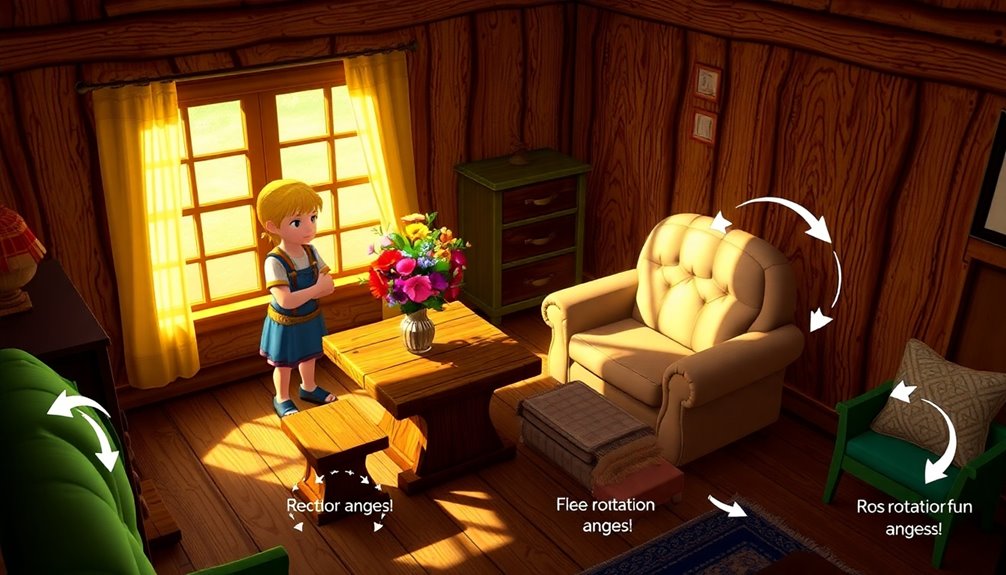
When choosing furniture in Stardew Valley, you'll want to consider both aesthetics and functionality. Your options for obtaining furniture are diverse, ranging from local stores to unique events. Start by visiting Pierre's General Store or the Carpenter's Shop, where you can purchase various items and catalogues. The Furniture Catalogue is especially useful; it unlocks most basic furniture items and offers unlimited access to free furniture after you've upgraded your farmhouse. Additionally, obtaining the Furniture Catalogue enhances your decorating options without ongoing costs.
Don't forget about festivals, where you can find exclusive furniture pieces, or check out the Wandering Merchant and Traveling Cart for unique and rare finds. Specific items, like the Crystal Chair or Deluxe Red Bed, can be acquired through quests or museum donations.
As you select your furniture, think about how each piece complements your farmhouse's overall design. You might want to mix and match different styles, like pairing the Modern Bookcase with more rustic items. Always keep in mind that some furniture can be placed outdoors, enhancing your farm's decor. By considering these factors, you'll create a cozy and inviting space that reflects your personal style in Stardew Valley.
Moving Furniture on Nintendo Switch
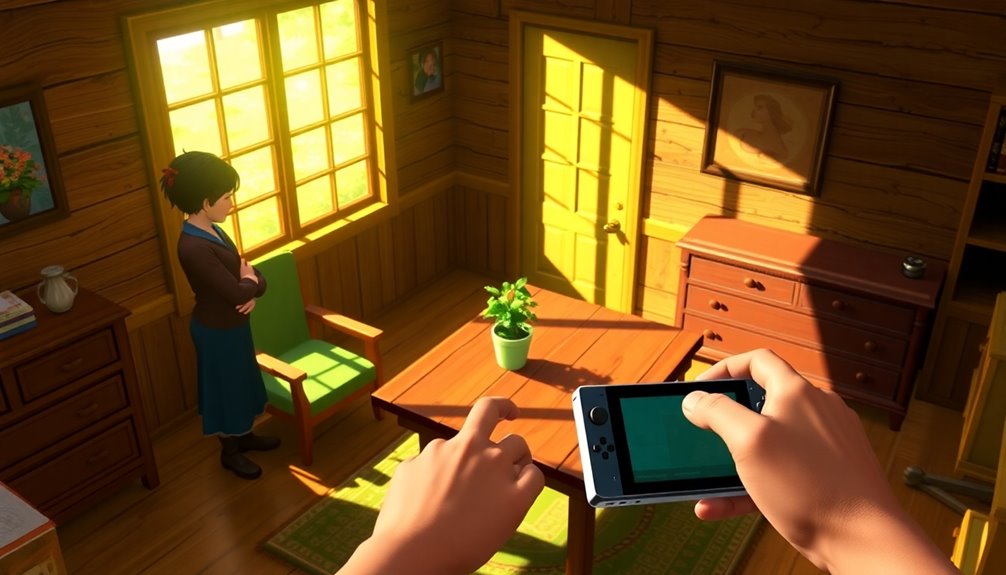
Moving furniture in Stardew Valley on the Nintendo Switch is a straightforward process that enhances your gameplay experience. To get started, use the Right Joystick to move the furniture around your room. As you do this, the furniture will attach to your cursor, showing its current position. Look for the green boxes, which indicate valid placement spots, while red boxes signal areas where you can't place furniture, including where your character is standing.
When you’re ready to place the furniture, simply press the Y button. Make sure a green box is visible to confirm the placement. Remember, furniture can only be placed in unoccupied and accessible spots, and if a location is invalid, the game won’t let you proceed. Additionally, it’s important to note that not all furniture is rotatable, so check the items you are rearranging for any specific placement rules. If you’re looking to make some changes to your space, remember that you can also move items around freely until you achieve the desired layout. If you ever need to reposition a large item or take sofa out of a door, ensure there’s enough room for it to maneuver. Always keep an eye out for potential obstacles in the area that might prevent a smooth transfer.
For more precise positioning, use the Right Joystick to fine-tune your furniture's location. Keep an eye on the placement indicators to avoid mistakes. Some furniture may have specific placement rules, so feel free to experiment with different spots and arrangements. Finally, save your game regularly to prevent losing any progress if anything goes wrong.
Rotating Furniture With the a Button
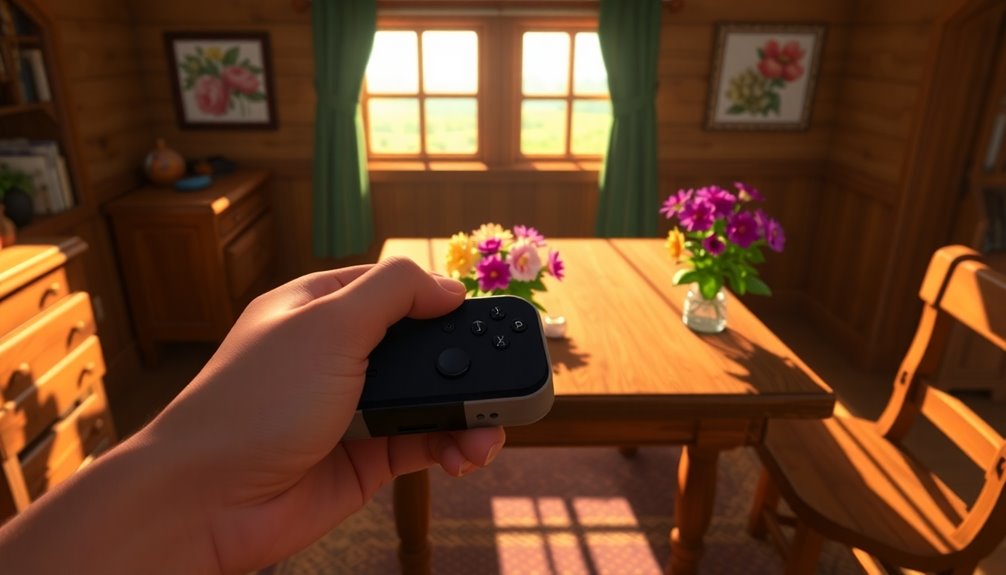
To rotate furniture in Stardew Valley on the Nintendo Switch, simply press the A button. Each time you press it, the furniture's orientation changes, cycling through all possible directions. Keep pressing until you achieve the desired look for your space.
Do note that not all items can be rotated; only furniture viewed from all sides, like chairs, couches, and tables, can be adjusted. Decorative pieces, such as rugs, are also rotatable. It's essential to check whether an item can be rotated, especially if it has a fixed 'face', like paintings or TVs. Understanding the rotation mechanics can help you maximize your design potential.
As you experiment with different rotations, pay attention to the placement indicators. A green box signals where the furniture can be correctly placed, while a red box shows where it can't go. These indicators help you avoid mistakes and ensure proper alignment.
Using the rotation feature can optimize your space and create a balanced layout in your farmhouse or shed. Remember, achieving symmetry and visual appeal is crucial, so take your time to find the best fit for your room. Happy decorating!
Placing Furniture Correctly
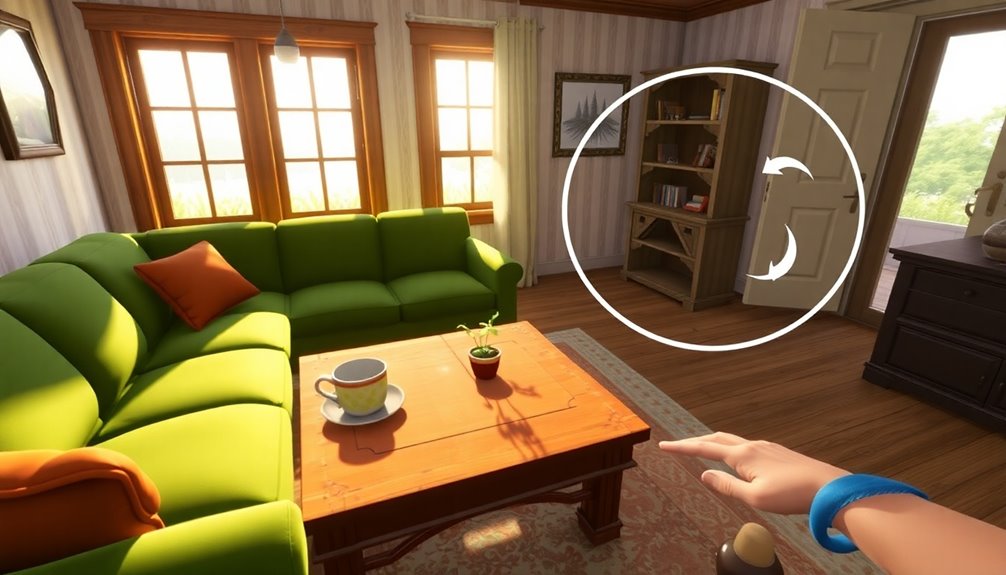
Placing furniture correctly in Stardew Valley enhances your living space and overall gameplay experience. First, you need to select the furniture from your inventory or pick it up from the world. On your Nintendo Switch, just press the A button to grab the item. Once selected, the furniture will attach to your cursor, making it ready for placement.
Before finalizing anything, keep an eye on the placement indicators. A green box signals the correct spot, while a red box indicates you can't place the furniture there. This feature helps avoid incorrect positioning, which could lead to your furniture being destroyed by villagers. Additionally, understanding placement limitations ensures that your decorations remain intact and adds to your overall design strategy.
To move and position your furniture, use the right joystick. Make sure you're within the farmhouse or designated area to avoid any mishaps. Adjust your placement until that green box appears, confirming you're good to go.
Lastly, be mindful that not all furniture can be rotated or placed in any position. Experiment with various items to discover which ones fit where. By following these steps, you'll create a cozy and functional space in your farmhouse.
Types of Rotatable Furniture
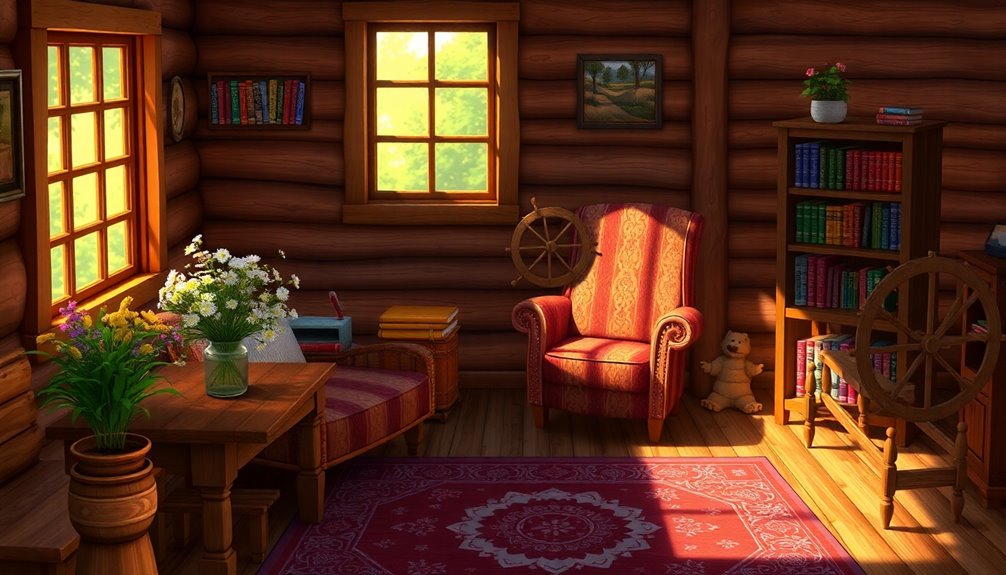
When it comes to enhancing your farmhouse in Stardew Valley, knowing which furniture pieces can be rotated is essential. The ability to rotate furniture adds a personal touch to your space, allowing you to create the perfect layout. On the Nintendo Switch, you can rotate items by simply pressing the A button, while Xbox users will do the same with their A button. If you're on PlayStation, the X button will get the job done, and PC players can right-click. Mobile users can easily tap to rotate.
Several furniture types can be rotated, including rugs, chairs, couches, tables, and benches. These pieces can be viewed from all sides, making them suitable for rotation. However, not all furniture can be rotated. For instance, fireplaces, paintings, televisions, chests, and items with a specific front side cannot be altered in this way. Additionally, players can purchase furniture from Robin's shop to expand their collection and enhance their interior design.
Tips for Effective Furniture Placement
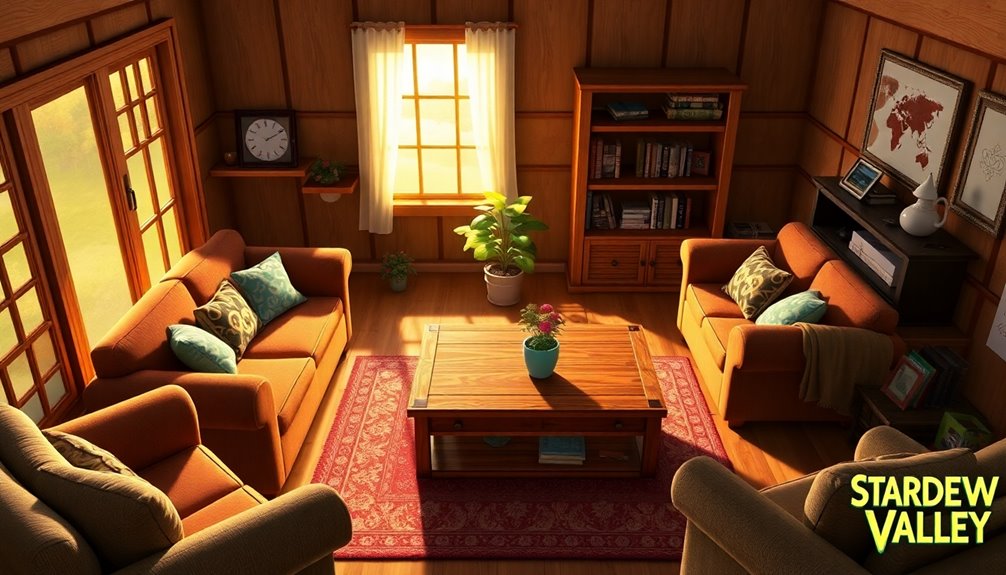
Effective furniture placement can transform your farmhouse into a cozy and functional space. Start by understanding placement indicators—green boxes show where you can place furniture, while red boxes indicate areas to avoid. Always select your furniture first to see these indicators and prevent any accidental destruction.
When selecting and moving furniture, attach it to your cursor by picking it up from your inventory or the world. Position the cursor at your desired location, ensuring the furniture aligns correctly before placing it down. If you want to rotate your furniture, simply press the A button on your Nintendo Switch until it faces the way you want. Remember that not all items can be rotated, so check for any visible 'face' before proceeding. Additionally, understanding which items can be rotated, such as common rotatable items, can help streamline your decorating process.
Avoid common mistakes by planning your layout ahead of time. Experiment with different placements to maximize your space while keeping within your farmhouse's limits. Don't forget to save frequently to protect your progress in case you need to undo any changes. By following these tips, you'll create a beautiful and functional space that reflects your unique style!
Frequently Asked Questions
Can I Rotate Furniture While It's in the Inventory?
You can't rotate furniture while it's still in your inventory. First, you need to select the item, which attaches it to your cursor. Once it's in placement mode, you can then move and rotate it. Look for the green box to see where it can go. Remember, only certain items can be rotated, so check if your selected piece allows for it before trying to adjust its orientation.
What Happens if I Place Furniture in a Red Box?
If you place furniture in a red box, it won't go down. The red squares indicate invalid spots, either because they're occupied or blocked by objects. You'll see no change in your environment, and you won't lose any resources for trying. Just check for a green square before placing your furniture. If you encounter a red box, adjust your position or clear obstructions until you find a valid placement area.
Are There Any Furniture Items That Cannot Be Rotated at All?
Yes, there are furniture items that can't be rotated at all. You'll find that paintings, fireplaces, televisions, portraits, and movie posters are fixed in their orientation. These items have a specific 'face' or direction they need to be viewed from, so they won't rotate. Keep this in mind when decorating your space, as it can limit your arrangement options and affect how your room looks overall.
How Do I Reset Furniture Placement to the Original Position?
To reset furniture placement to its original position, you'll need to remove the item first. Select a tool from your inventory and approach the furniture. Use the tool to remove it, which sends the furniture back to your inventory. Unfortunately, there isn't a direct option to return it to its default orientation, so you'll need to re-place it if you want to adjust its position. Be mindful of the placement rules!
Can I Rotate Furniture While in Co-Op Mode?
Yes, you can rotate furniture while in co-op mode. Just like in single-player, you'll use the same controls. Move the furniture with the Right Joystick, then press the A button to rotate it. Once you've got it how you like it, hit the Y button to place it down. Remember, though, some items can't be rotated, so check their placement options first to avoid frustration!
Conclusion
Now that you know how to rotate furniture in Stardew Valley on your Switch, you can easily customize your farm and home. Remember to select your furniture, use the right buttons to rotate, and place it just the way you like. Experiment with different arrangements to make your space feel more personal and inviting. With a little creativity, you'll create the perfect cozy setting for you and your friends to enjoy. Happy decorating!
